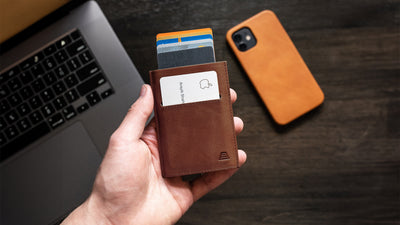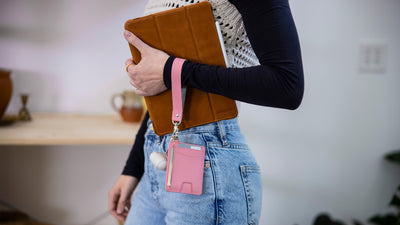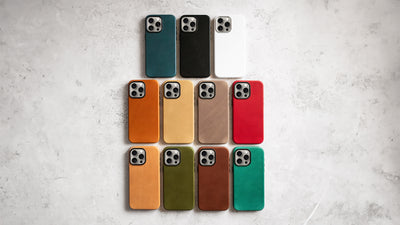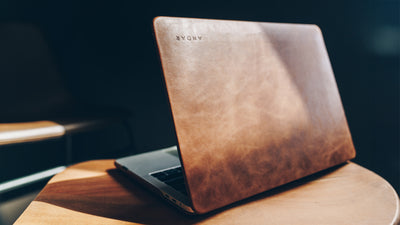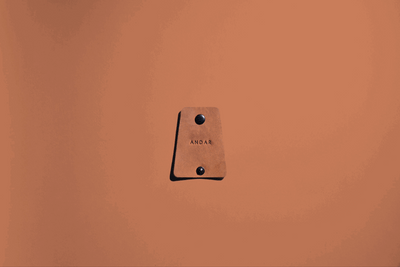The Blog
Leather Cream: How To Keep Your Leather In Great Condition
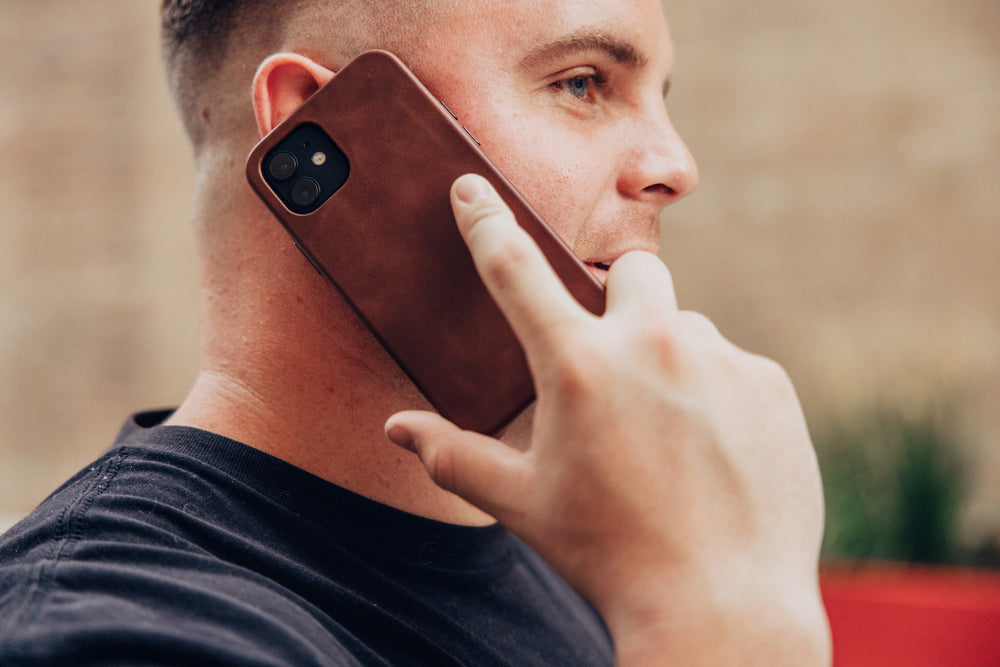
Of the main reasons why leather has remained—for centuries—one of the most popular materials for clothes, accessories, and furniture is its durability. Indeed, if cared for properly, your leather goods will last you decades.
So, to make sure this actually happens, discover how you can use leather cream to keep your leather in top condition with this guide from Andar.
Why Your Leather Needs Some TLC
Unlike popular synthetics like nylon, polyester, and acrylic, leather is 100% natural. And like most natural materials, this means that leather tends to be highly porous.
On the bright side, its high porosity makes leather incredibly breathable. This is great news for owners of leather jackets, shoes, and accessories. But on the other hand, this means that leather tends to absorb the moisture it comes in contact with.
Of course, that’s all well and good until the water begins to evaporate from the leather, taking some of the leather’s natural oils along with it. When that happens, your leather can become dry, brittle, and (in some cases) cracked.
When that happens, it’s completely possible to restore your leather with the right oils and conditioners. But sometimes, the ingredients we go for are anything but good for our leather goods.
Let’s discover what some of these ingredients might be.
5 Ways to Ruin Your Leather
If you’ve ever watched your leather get dry, faded, or become stained right before your eyes, it’s normal to get a little panicked. After all, your leather goods are an investment, and you want them to look great for years to come.
However, in that moment of panic, you might find yourself reaching for products that do more harm than good for your leather.
Let’s start with a “Bad News First” approach. Here are the five products that will destroy your leather and probably totally ruin your day.
1. Disinfectant Wipes
Of course, you’ll never use alcohol-based wipes on your leather since these tend to have the most drying effect. But other cleansing wipes don’t fare much better when it comes to leather care.
Whether they’re baby wipes, all-natural cleansing wipes, or even those marked as being leather-safe, you should put them back on the shelf. They have ingredients that contain a mixture of those that are directly drying and those that don’t do anything for your leather at all.
Avoid cleaning your leather with any wipes and stick to the classic soap-and-water combination to disinfect.
2. Vegetable Oils
While vegetable oils will technically add moisture to your leather, they aren’t the greatest option for conditioning it. Depending on the vegetable oil you use, they can turn rancid pretty quickly. Plus, this oil can add a not-so-pleasant scent to your leather goods. If you got vegetable or olive oil on your leather goods by accident, there are steps to take to remove the oil.
Aside from that, some vegetable oils won’t be absorbed by your leather. Instead, the oil will just sit on the surface. This can lead to your leather feeling greasy or sticky, which is definitely not the softness and suppleness we had in mind.
3. Neatsfoot Oil
This type of oil is made from cattle feet and shin bones. (FYI: “Neat” is the old English word for cattle.)
Although it’s been used for centuries to condition leather, it’s actually come under criticism for its high propensity to oxidize. This can cause leather to deteriorate more quickly than it otherwise would instead of being preserved as we want it to. For this reason, we’d proceed with caution when considering neatsfoot oil.
4. Shoe Polish
Shoe polish is fine and well when it’s used for polishing shoes, but that’s about as far as its uses go. If you want to restore your full-grain leather accessories, then shining them with shoe polish will just make them shiny and sticky. In this case, there are much better alternatives to accomplishing your goals.
5. Hair Spray
You may have heard that hair spray can help you get stains out of your leather. That may be so, but there are much better ways to accomplish this. Additionally, hairspray can do some serious damage to your leather goods.
Why, you ask? Well, since hairspray is alcohol-based, it can evaporate moisture out of your full-grain leather. Plus, hairspray can leave a sticky residue that will make your leather unpleasant to touch. For this reason, we’d steer 100% clear of this product.
How To Keep Your Leather Looking Great With Leather Cream
Instead of cleaning your full-grain leather with disinfectant wipes, moisturizing it with olive oil, and polishing it with shoe polish, we have a whole other leather care routine in mind. In particular, we’re talking about our tried-and-true leather cream that has a variety of functions.
Here’s how you can make the most use out of it:
Why Leather Cream?
Leather cream is formulated specially to be used for conditioning leather. In our case, Andar’s leather cream is made out of a blend of beeswax, seed oils, and naturally-occurring lipids: a trifecta that provides a variety of benefits for your leather.
Regardless of its exact ingredients, there are a few reasons why a professional leather cream is the superior choice to anything we’ve listed above.
Here are some of the main benefits:
It Can Soften Leather
Because it is made of small molecules, leather cream can penetrate the leather and give it deep moisture from the inside, instead of just sitting on top like some other oils. This will help leather keep its full flexibility, which means no more cracks.
It Can Smooth Out Scratches
The small scratches that form on your leather can be completely fixed by using leather conditioners. Just rub in a small amount and watch them disappear right before your eyes.
It Can Protect Against Water Damage
Leather cream can help to form a protective barrier over your leather and make it less likely for moisture to get in and out. This is an important step in leather care that’s called weatherproofing. This will make your leather more resistant to water in case you get caught in a rainstorm with no umbrella.
It Can Prevent Fading
A good leather cream can go a long way in restoring the color of your faded leather. Your leather actually fades due to changes in pH—which is thanks to the dyes used to color your leather. Sunlight, temperature fluctuations, and body oils can cause a change in pH, and thus, a change in color.
So, if you’re constantly sitting outside with your laptop case, it can fade a lot faster than if you did all your work in a basement (of course, we’d take a window seat in our favorite café any day).
It Won’t Leave a Sticky Residue
Professional leather creams use ingredients that will be absorbed by your leather: no sticky yuck left behind. This means that it won’t leave a sticky coat that you won’t ever want to touch.
It Won’t Be Toxic
Most leather creams (such as ours at Andar) are made of all-natural, non-toxic ingredients, which makes them 100% safe to use. Not to mention, they’ll be more gentle on your leather.
How To Apply Leather Cream
Conditioning your leather is pretty simple.
Follow these foolproof steps to doing it the easy way:
- Clean Your Leather: Following our cleaning instructions, make sure your leather is free of any stains, dirt, or dust.
- Apply Just the Right Amount of Leather Cream: Applying too much can leave your leather feeling sticky, while applying too little won’t give you the desired effect. Use a rag and apply the leather cream in light layers until the leather is slightly saturated.
- Let It Absorb: Allow the leather cream at least 30 minutes to fully soak into your full-grain leather goods.
- Rub Off Any Excess: Using a clean, dry rag, rub off any excess leather cream and buff the surface until your leather looks and feels smooth.
Keep in mind that your leather might darken a bit as a result of applying the leather cream. This is a good thing as it can restore a faded color and buff out any scratches. But if it’s something that concerns you, then we suggest doing a spot test to see if you like the new color. If all’s good to you, then proceed as usual!
Lastly, make sure that the leather you’re conditioning is full-grain leather. Putting leather conditioner on other leather materials such as suede can seriously change their appearance—for better or worse. Make you know what type of leather you’re working with before you begin to condition it.
For the Smoothest Leather
Regularly conditioning your leather accessories with a leather cream will go a long way in preserving its strength, texture, and color. So, make sure to invest in a high-quality leather cream and use it regularly to keep your leather looking good as new for years to come.
Our Sources:
Why Does Cooking Oil Go Rancid? | Live Science
How to Restore and Care for Leather | The Wall Street Journal
